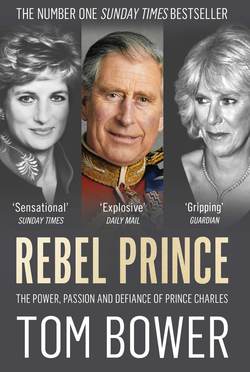Читать книгу Rebel Prince: The Power, Passion and Defiance of Prince Charles – the explosive biography, as seen in the Daily Mail - Tom Bower - Страница 13
7 The Masterbuilder
ОглавлениеTowards the end of 1999, Charles’s disenchantment with Tony Blair increased. Much of New Labour’s promise of a fresh beginning – Blair’s pledge to be ‘whiter than white, purer than pure’ – had quickly become tainted. The exposure of Downing Street’s sleazy relationship with Bernie Ecclestone, the owner of Formula One motor racing, Alastair Campbell’s devotion to deceptive ‘spin’, the dispiriting arguments about school standards, and the plans for a vacuous dome in Greenwich to celebrate the millennium, all aggravated his mistrust. Charles blamed government ministers for evasion, especially about the environment. In turn, they felt that his expectations were often unrealistic. But honest debate was difficult with a dynast unwilling to listen to other points of view.
A fierce exchange with John Drummond, the arts administrator and BBC music controller, after a concert at the Bath Festival was an exception. The Bartók and Schoenberg he had just heard, Charles complained, was ‘like scraping a nail over a blackboard’.
‘Your taste in music,’ Drummond replied after a pause, ‘is as execrable as is your taste in art and architecture.’ Charles, he knew, enjoyed the more traditional music of Hubert Parry, composer of ‘Jerusalem’.
As their argument rolled on, the lord lieutenant of Somerset, who had accompanied Charles to the concert, became disturbed. ‘You must stop this,’ he urged Charles’s courtiers. ‘Interpose your body between them.’
‘I’m enjoying this,’ said Charles, laughing. ‘I like John. No one’s honest with me like that.’
Another who did not shrink from giving his opinion to power was Richard Rogers, the prominent British architect who in 2017 was to criticise the prince severely in his autobiography, A Place for All People. For years he had openly called Charles ignorant, privileged and feudal. His candour was not appreciated by its target, not least because in 1999 Rogers appeared to have registered a major victory over him. Not only had he designed the Lloyd’s insurance building, an edifice of glass, exterior metal pipes and lopsided steel, in the middle of the neoclassical City of London, but also the gigantic white fibreglass Millennium Dome, looming over the Thames at Greenwich.
For sixteen years, the two men had fought about the virtues and vices of modernist and traditional architecture. Rogers denounced Charles’s self-appointment as the people’s representative against modern architects as symbolic of anachronistic privilege. For his part, Charles was unyielding in his judgement of a man he regarded as a hypocritical champagne socialist. During the early years of Blair’s government, their battle was unequal. As an admirer of New Labour, Rogers had won the prime minister’s support for ‘Urban Vision’, his scheme to improve the quality of city life without regarding old buildings as untouchable. In 1998 John Prescott, the deputy prime minister, who was responsible for the environment, adopted Rogers’s scheme as government policy.
In 2000, soon after Ken Livingstone’s election as London’s mayor, Rogers was appointed his architectural adviser. Livingstone was paying Rogers £130,000 a year, even though the mayor’s office would also be considering the architect’s applications for planning permission in central London. Both shrugged aside any potential conflict of interest. Some of Rogers’s recommendations might have attracted Charles’s support, but architect and prince found any common ground distasteful. Charles wanted to protect London’s ancient skyline, especially the distant views of St Paul’s Cathedral; Rogers preached enthusiasm, endorsed by the mayor, for skyscraper office blocks.
